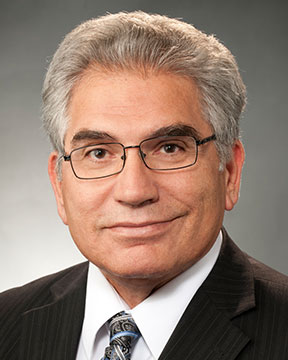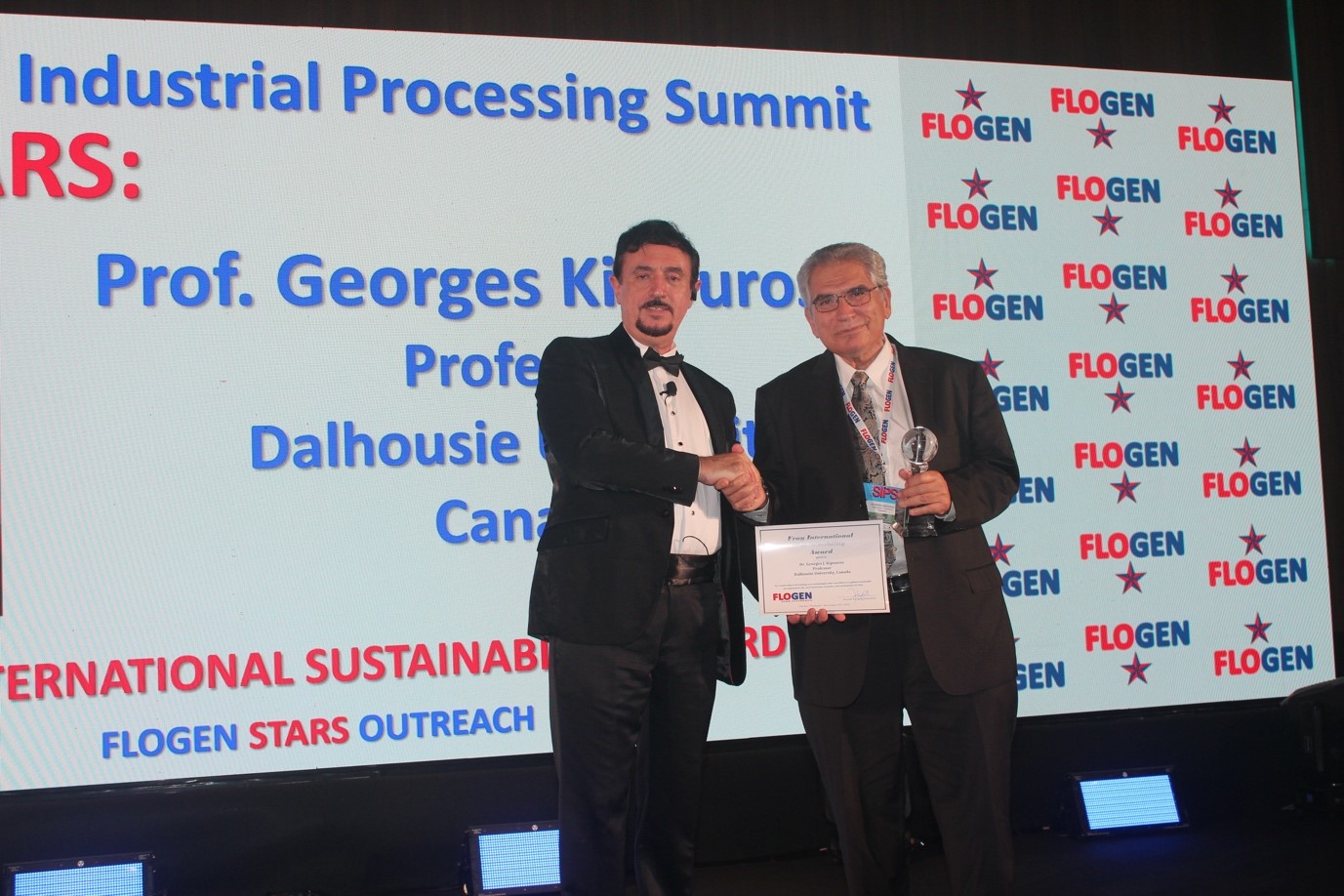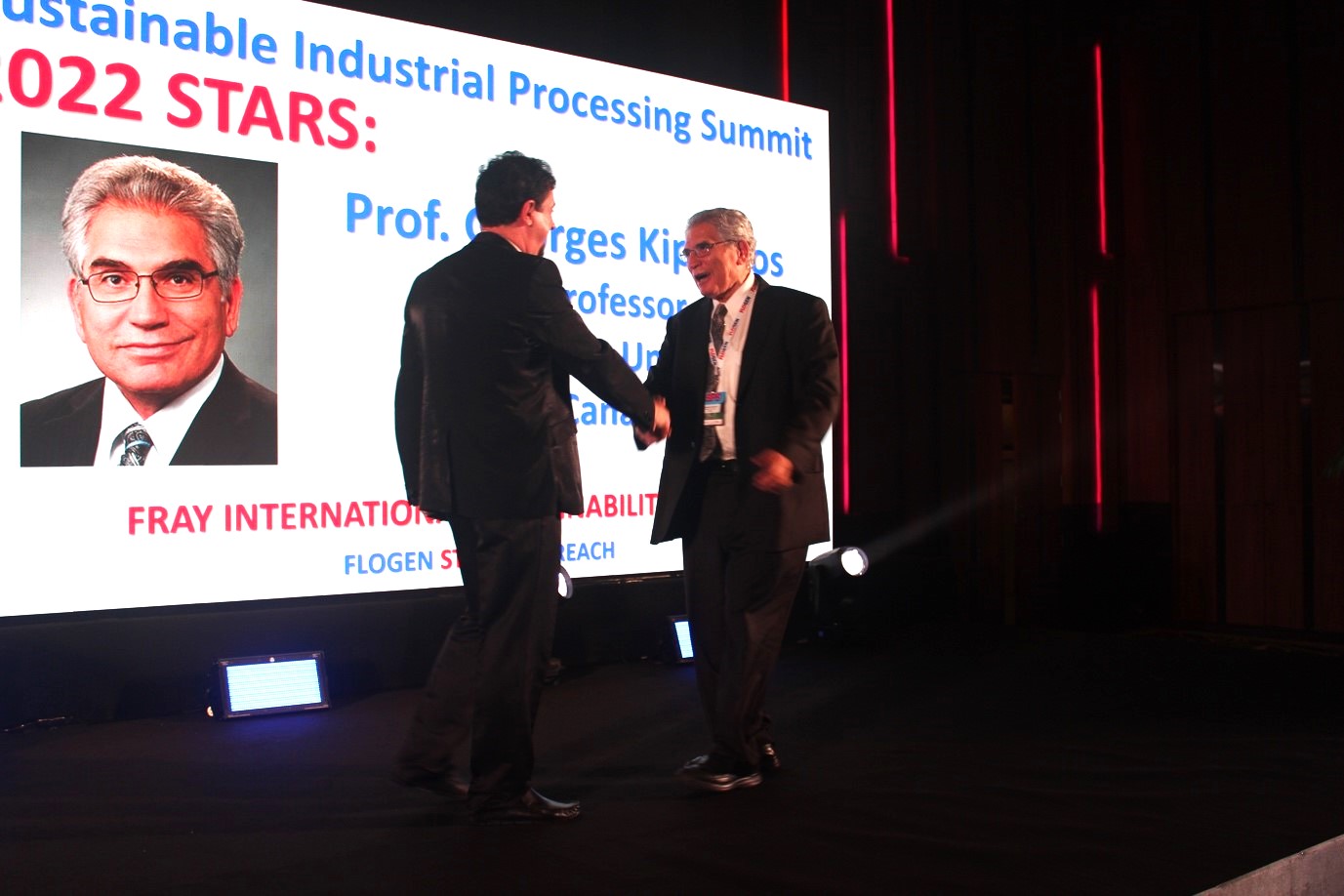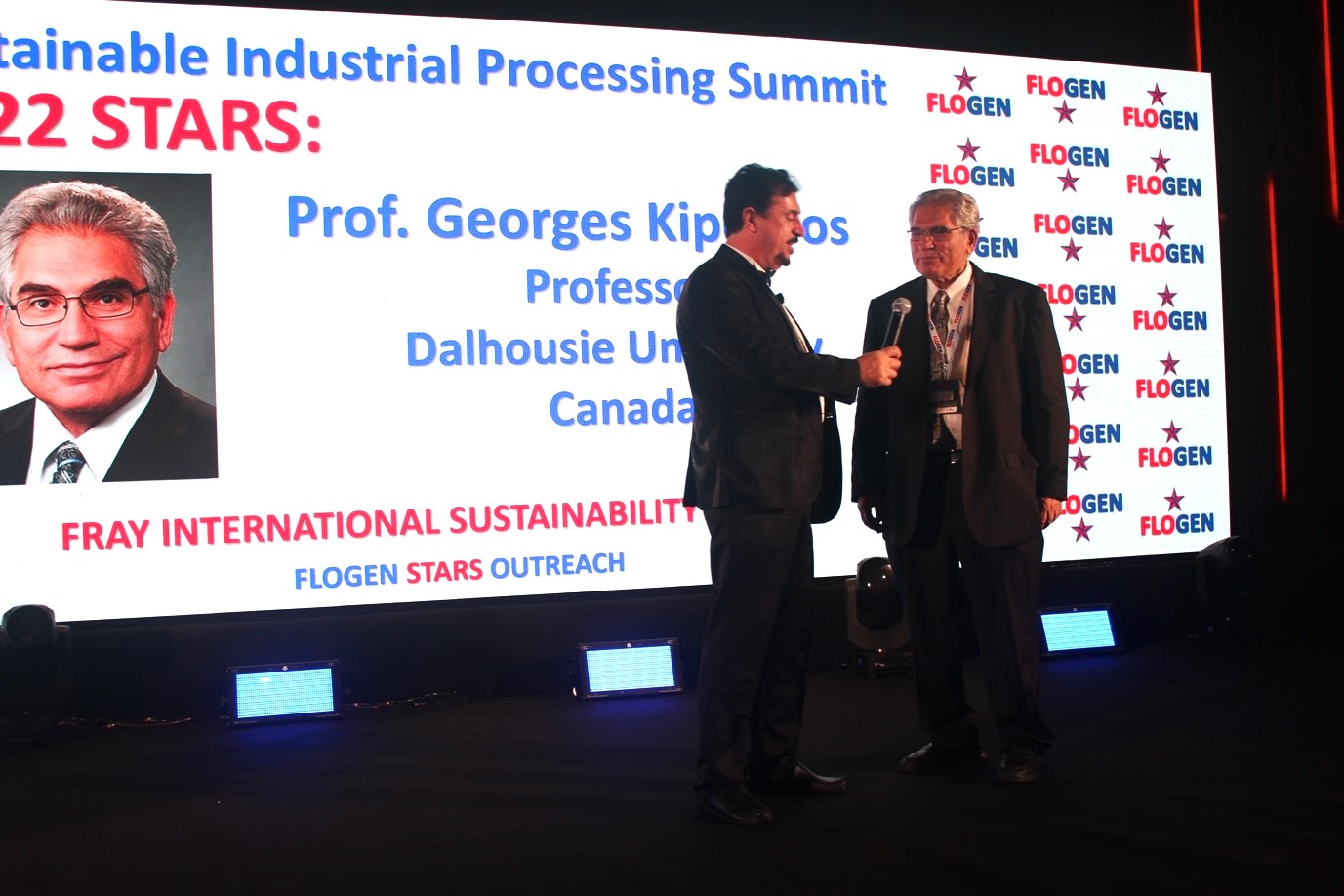About Award Winners
Politics |
Corporations |
Academia |
Research Institutions

Georges John Kipouros, was educated at the National Technical University of Athens, Greece, graduating
first in rank with a 5-year Diploma of Engineering in Mining and Metallurgical Engineering from the
Department of Chemical Engineering. He then spent 3 years of military service as an Acting Head,
Bureau of Studies, Permanent Committee for Receiving Ammunition, Greek Armed Forces, Athens,
Greece in the rank of a second leutenant. Georges immigrated to Toronto, Canada and subsequently
graduated from the Graduate School of the University of Toronto, Toronto, Ontario, Canada, with a
Master of Applied Science (M.A.Sc.) in Metallurgy and Materials Science. He also obtained a Doctor of
Philosophy (Ph.D) in the same fields working with the late Dr. Spiro N. Flengas. The topic of his research
was the electrorefing of zirconium metal from chloride and fluoride melts and the complete study of of
the electrolyte systems by determining the phase diagrams, x-Ray studies, measurments of the vapour
pressures and electrochemical properties of molten salts. He also studied the separation of zirconium from
hafnium by a high temperature process. The highlight was the succesful electrorefing of zirconium metal
in chloride-fluoride melts and the most accurate vapour pressure measurments of hexachlorocompouns of
zirconiumand hafnium important for their separation.
He started his career as a Post Doctoral Institute Research Associate, (with Dr. Donald R.
Sadoway), Department of Materials Science and Engineering; Massechustts Institute of Technology,
Cambridge Masschusetts (1982-1985). The research work at MIT was related to the investigation of the
electrodeposition of aluminum and magnesium by Raman spectroscopy at temperatures of industrial
practice. Streamers and complex formations were identified. Work was conducted on the
elecctrodeposition of molybdenum metal on graphite from chloride melts. The electrodepositon was
successful and a thick deposits of cm size were achieved. Prior to electrolysis the melts were
characterized by determining the reveland phase diagrams and detail electrodeposition mechanisms. The
highlight of his research at MIT was the writing of the chapter “The chemistry and electrochemistry of
magnesium production” which explained the uknown at that time process of Nork Hydro based only on
theoretical calculations using existing and predicted thermodynamic data. Other subjects of research were
on lithium production. It was at that time that the reputation of the Sadoway’s group attracted attention
and a two-day short cource at TMS on molten salts was initiated that spanned for more than ten years.
His industry research career followed that of MIT by a position of Senior Research Scientist,
Department of Physical Chemistry, General Motors Research and Development Center, Warren,
Michigan, USA (1985-1989). He was recruited to lead in the use of molten salt process to produce
neodymium-iron alloy which constitutes the base for the production of the neodymium-iron-boron
permanent magnets for the innovative switched reluctance and permanent magnet motors. He designed
and conducted scale-up experiments to determine the parameters necessary for technology transfer,
developed methods for regenerating and recycling the reactants and treating the by products. He
tranferred successfully the process to the plant of MAGNEQUENCH SBU in Anderson, Indiana.
Kipouros returned to Canada in 1989 as a tenured Associate Professor and Chair of the
Metallurgical Engineering program in the Department of Mining and Metallurgical Engineering at the
Technical University of Nova Scotia (TUNS) in Halifax, Nova Scotia. His research activities continued in
the field of molten salts and slags by measuring viscocities relevant to steelmaking and extending his
research interests in corrosion and powder metallurgy. He provided consulting to small and large
international corporations in the fields of his research interests. He was invited (1995-1996) by the
Department of Physics, General Motors Research and Development Center, Warren, Michigan to spend
his first sabbatical leave of absence as a Faculty Consultant, Corporate Magnesium Center, to lead in the
development of a new process to produce high purity mangesium for automobile manufacturing. This
relation continued for many more years as it also involved directed efforts to tranfer the process to the
industrial plant by partnership with an aluminum producer and also evaluation of alternative processes for
the production of magnesium chloride.
In the academic field he became full professor and Head (1994-2000) of the Department of Mining and
Metallurgical Engineering at TUNS and he was instrumental in achieving a smooth transition when TUNS
amalgamated, by the government of Nova Scotia, with Dalhousie University. He was elected Vice-Chair (1997-
2000), Dalhousie University Senate, Halifax, N.S. which is the governing academic body of the university. Other
academic appointments include Assistant/special Dean of Engineering with responsibilities of preparation of
engineering education accreditation for the 6 associated universities and renovating/design the new campus,
organize satellite campuses.
Director, Minerals Engineering Centre, Dal, Halifax, N.S (2000-2013) with responsibilities included the
fiscal and administrative matters of the centre and providing leadership in a wide variety of research and service
activities related to resource and minerals industries. Focus was on expanding the research activities of the centre
in the areas of materials, offshore drilling, environmental and power generation sectors.
Dean and Professor, College of Engineering (2013-2016) University of Saskatchewan,
Saskatoon, Saskatchean with goals to diligently and strategically invigorate the college in terms of
academic accreditation and expand the research into other fields including the utilisation of the national
synchrotron facility. Presently Georges Kipouros is Emeritus Professor and Dean, Chemical and
Biological Engineering, University of Saskatchewan, Adjunct Professor, Department of Mechanical
Engineering and Mechatronics, Dalhousie University, and Adjunct Professor, Department of Mechanical
Engineering, Waterloo University.
He is also Vice General Manager of R&D, the equivalent of Vice-President of Research and
Development of a western industry, Zhejiang Kangpurui Auto Parts Co., Ltd., as a result of a 10-year
Visa R of the Peoples Republic of China as a recognition of High Level Foreign Talents. He awaits to
begin his duties when the Covit-19 allows.
In 2017 he was Project Professor, Institute of Industrial Science (IIS), University of Tokyo
Other research visits include:
(1993) Visiting Professor, Department of Chemical Engineering & Institute of ChemicalEngineering and
High Temperature Chemical Processes, University of Patras, Patras, Greece.
Visiting Professor, Institute of Inorganic Chemistry, Norwegian Institute of Technology, University of
Trondheim, Trondheim,Norway.
1998-2001 Faculty Consultant, Mehran University of Engineering and Technology, Jamshoro,
Sindh, Pakistan,
2002-2003 Visiting Professor, Institute of Multidisciplinary Research for Advanced Materials,
Tohoku University, 1,1 Katahira, 2-Chome, Aobaku, Sendai 980-8577, Japan
Despite of his academic higher administration involvement, consulting engements and
resarch visits Dr. Kipouros has an uninterupted research support until 2023 from Natural Sciences and
Engineering Research Council (NSERC) in Canada. This is due to the initiation of innovative research in
areas that previous researchers were unsuccesful or left unexplored due to research difficulties. The most
prominent areas of research were: powder metallurgy beyond the copper, stainless steel and zink;
electroless plating of difficult to plate metals; electrolytic problems such as unwanted passivation (copper
production) and high temperature measurements of viscosity of slags.
In the field of powder metallurgy previous researchers tried to apply the existing techmiques
of high purity powders of aluminum and concluded correctly that conventional sintering pure aluminum
powders cannot be achieved because of the instanteneous passivation of pure aluminum. However, the
philosophy of the research group under Dr.Kipouros attempted and successfully developed sintering of
aluminum containing small amounts of magnesium which breaks the passivation layer of aluminum oxide
andallowedthe sintering under conventional conditions. Detail studies of other useful elements can be
added providing that do not change drastically the advantage of aluminum, being light weight, and do not
increase the sintering temperature requirement. The first Ph.D. student do do this, Professor Paul Bishop,
was hired by GKN Sinter metals and after a successful long research career in the industry, which resulted
in the production of millions aluminum parts for the automotive sector, he returned to Dalhousie
University as a faculty member. Many more Ph.D. students were trained on the topic and are working an
academic or industrial places.
A similar approach was followed in the powder metallurgy of magnesium metal which does
not passivate and the additions to eliminate passivation products lie in the group of the rare earth elements
that the powder producing manufacturers had no ways to produce the necacery starting materials. The
project of the magnesium sintering was led by a Ph.D. student, Dr. Paul Burke, and many more students
using filling of calcium metal to prove the correctness of the idea to sinter magneium metal. Dr. Burke
continued his research at MIT and to Digital Alloys.
Three more research directions were investigated: the passivation of copper cathodes in the
production of pure copper; the aqueous corrosion of cermets and the electroless coating of of difficult to
plate metals. In the passivation of the copper cathodes it was discovered that the passivation was caused
by the presence of nickel in the electrolyte. The research was led by a Ph.D. student Dr. George Jarjoura
now a professor at Dalhousie University. Industry responded favorably to the discovery andy every
copper production plant contains a nickel removal unit. The electroless plating was initiated by Dr. Nazila
Dadvand presently Director, Coatings division, Texas Instruments.

Prof. Georges Kipouros, Receiving the Fray International Award from Dr. Florian Kongoli at FLOGEN SIPS 2022

Dr. Florian Kongoli congratulating Prof. Georges Kipouros on his award at FLOGEN SIPS 2022

Prof. Georges Kipouros, Delivering his acceptance speech to Dr. Florian Kongoli during the FLOGEN SIPS 2022 ceremony
FLOGEN SIPS 2022 Awards: Dr. Georges Kipouros, Professor, Dalhousie University, Canada